in front of Gnipahellir;
will shackles burst asunder
and the wolf free, unleashed
We live in exciting times. The question is always, of course, how exciting? Is this the breakdown that will lead to a total collapse, or is it a temporary dip, soon to be followed by a new period of growth and security? Is there something looming in between these two alternatives—not a complete collapse, with hordes of mutants battling each other on the highways, but also not “more of the same”? What paradigm, model of thinking, describes our times the best? Is it the irrepressible belief in progress of a Condorcet, the man of the enlightenment—or is the answer to be found with our ancestors? The latter named the apocalypse Ragnarök. This time would be preceded by a period of moral and natural catastrophes, during which “brethren shall fight” and “sisters’ children their kinship spoil”; “harsh is the world, whoredom plenty.” Then the wolves would break their fetters, and from the kingdoms of the giants and the dead the gods’ sworn enemies would march to the final battle which has been building up for such a long time. An old order succumbs in blood and fire, and a new one ensues.
As with all myths, our ancestors’ Ragnarök can be interpreted in different ways. One possible interpretation is based on the notion that the gods had built a world order that carried within itself the seeds of its own destruction. Not least of all with respect to the gods’ asymmetric relationship to the giants (the jötnar), in which the gods, among other things, kill giants and steal their women, but never the other way around. This is an asymmetric relationship that, on the one hand, in each individual case seems logical and necessary, but yet, on the other hand, makes for bad blood and increasingly bad feelings. Many elements in the myth bring to mind our own times. “Whoredom plenty” and “sisters’ children their kinship spoil” speak for themselves: both virtue and kinship have lost much of their meaning, and have been replaced by hedonism and cosmopolitan vanity. In the myth, there are also the cohorts of Hel, comparable to the cohorts of the living dead—people bereft of memory and with empty chests, “individuals” oscillating between “labor” and “entertainment.” We also recognize in our times the dragon-like Nidhogg that gnaws away at the roots of the World Tree; regardless of whether this indicates environmental destruction or global finance capital, or if it is rather the ecological or the humanitarian foundations of our civilization that are being gnawed away. The World Serpent (Jörmundgandr) can bring to mind those dark undercurrents in the collective psyche that thrive beneath the rational and civilized surface—undercurrents such as material greed, narcissism, and collective death-drive. Against these stands Thor—the friend of the honourable middle layers. Then there is Fenrir, a multifaceted gestalt, who, among other things, represents the demonic masculine, but who also reminds us how the polarisation, in its final stages of disorder, runs the risk of erupting in open violence. At that point, the antagonisms can no longer be resolved through compromises; often those involved won’t even be interested in making such an attempt. The witch Gullveig can remind us of the sway that money holds and the consequences thereof, as well as how difficult it is to fight money-power and materialism. The giantess Angrboda is instead reminiscent of the demonic feminine advancing its positions in society and the collective unconscious. Psychologically interesting here is the connection between Angrboda and the wolves and ogres bred forth in the Iron Forest—for the sake of tearing the world order of the gods to pieces. In our times, there is a similar alliance between cat ladies and other—albeit less supernatural—threats against the order. The fire-giant Surtr with his fiery sword that incinerates the world is an uncanny reminder of nuclear war. Against all these stand the gods—various aspects of the order. There is the powerful but simple Thor, as well as Odin, in whom several aspects are united; he has prepared his people for many generations for what looms ahead. There are also many significant goddesses like Freyja, Idunn, and Frigg, who remind us of how highly our ancestors regarded their women. In short, there is an impressive lineup, even on the side of the gods. But by the final battle, they lack the swords of Baldur and Freyr—a problem that has dire consequences.
This, it seems, is one possible interpretation among many (even though, as we will find, it is an unexpectedly useful one for understanding our times). Loki’s children, not least, are indispensable elements of every order, as necessary as the gods themselves, and possibly once gods in their own right (Fenrir as Time/devourer, The World Serpent as the upholder of the world, and Hel who guards the passage between the living and the dead). Even Odin has strong connections to the giants and their primordial wisdom. Asatru is not dualistic in the same way as Christianity. Still, the myth reminds us of the fact that every order has a beginning and an end, and as such makes for a wholesome counterweight to the ahistorical optimism of our times. Within every order grow conflicts and processes that one day will lead to its perdition. Angrboda breeds forth her ogres; Freyr loses his sword; relations between gods and giants become continually worse. The Marxist thesis, that the undertakers of capitalism emerge from the very bosom of capitalist society, is but one example of this pattern among many; the conviction that something better will follow, however, is an expression of Marxism’s modern deterministic and optimistic character. Ragnarök, as well as related myths, reminds us that an accident rarely arrives alone. In Indian analogues, social, moral, and natural catastrophes are central; in the final stages, the rulers become directly harmful to their subjects, raising taxes without reservation; people move en masse across the earth; violence spreads; money and sex become central, while truthfulness, honor, solidarity, and a sense of duty are confined to the background; starvation and disease will haunt mankind, as permanent winter and other natural disasters afflict the earth.
But the myth can also serve as a wholesome counterweight to an exaggerated pessimism and determinism. The gods—however you choose to see them—intervene when disorder gets too far out of hand. In many Indo-European myths, the gods’ avatars—in the shape of Kalki or Saoshyant—step in to punish the godless just when everything looks pitch-black. A new order and a new Golden Age follow, and the process goes full circle and starts to repeat itself again. The possibility for regeneration does exist and it is up to us to identify the possible sources for such a possibility. This is to a large extent what this book sets out to do. We will acquaint ourselves with numerous more or less promising challengers of the status quo. We will also attempt to discern the various factors of success and the stumbling blocks connected to their strategies. But first we shall get to know the ruins and the demons that roam about them.
Among the Ruins
A useful simile for our time is the ruin-landscape. In his time, Julius Evola directed his message to “the men among the ruins”; the East German national anthem also alluded to the ruins from which the state had arisen. For the time being, this is not so much about physical ruins, although exceptions do exist, like Detroit, the bomb-tattered Donbass, Aleppo, and an increasing number of deserted, actual ruin-landscapes. But if we leave the strictly material viewpoint aside and speak instead of the immaterial foundations of our civilization the view is different; then we truly are living in a landscape of ruins. Classical culture and humanist ideals; the faculty to experience beauty; the bonds between man and society, nature, or the Sacred; the faculty to experience romance; fantasy; the art of conversation; and much more besides lie in shambles. Traditions, knowledge of history and humanist, anciently rooted ideals are today left in ruins by the pressure of numerous attackers equally fatal as Nidhogg. This also suggests why it is that movies and television series about the Zombie Apocalypse have gained such popularity, because anyone void of memory, mannerisms, and human ideals is in many ways a living corpse, whose only motivation in life consists in a short-sighted hunger for what other people can offer (brains or what have you). During dark and gloomy days, the modern world can truly appear like a city of ruins inhabited by the living dead. However, to embrace any outlook darkened to this extent might also be an indication that we ourselves are seized by the rot.
The ruins, the desert of Nietzsche and Baudrillard, gradually increases its span, both in the material and the immaterial realms. In spite of all talk about growth and tolerance, in spite of the hypnotizing exuberance of things and all of consumerist society’s impressions, many sense the emptiness beneath the glossy surface. Numerous examples of the unfolding ruin-landscape can be given. In the human sphere, we could mention the fact that two out of three Americans are obese or that the testosterone levels among American men has dropped by 17% between 1987 and 2004. The culture too is in a shambles, as we realize as soon as we put on the radio, only to have our ears struck by moaning “gentlemen” and passive-aggressive female singers. Both the economic and the political systems have mutated beyond all recognition; in spite of economic growth, the salaries of the American middle class have been stagnating for decades. Reactions against this are, as a rule, branded as “populism” or worse; and by contrast, those responsible for the 2008 crash have not been incarcerated, but retain their power and fiscal means. The boundaries between Goldman Sachs and the White House appear—to put it mildly—rather fluid, not only under the Bush and Obama administrations, but also under the Trump administration. Wikileaks’ often staggering disclosures are actively silenced by the established media or branded as “fake news.” Countries such as Iraq, Libya, and Syria are destroyed by American politics, and others might follow. In the European heartland, regions emerge that are no longer European; in London, Malmo, and Amsterdam, the native stock is today a minority; suburban areas that most Swedes shun increase in numbers and become even less inviting each year. Nevertheless, the accusations of “Nazism” continue to shower on anyone that dares to speak of these phenomena. Our relation to nature is severely damaged. Hundreds of species or so go permanently extinct pretty much daily, while toxins and chemicals continue to harm people. Many never leave the big cities and have the majority of their experiences fed to them through digital monitors.
Many push this away whenever they are reminded of it and return as soon as they can to television pop music contests or to some glass-of-wine-after-work-posting or the like on Instagram. It is, however, becoming increasingly difficult to keep the growling wolf at bay; the hum of the television in the background is, time and again, drowned by the unpleasant developments of larger society. The bourgeoisie that felt at home during the last half of the 1900s now finds itself increasingly disoriented and desperately seeks authorities who can promise that everything will become ordinary again and that the growing number of critics and Cassandras are really just bad people—even when the authorities in question are warmongers or corrupt, or just proposing blatant half-measures. Anyone frustrated by the disinclination of his contemporaries to see reality as it is can perhaps find consolation in the fact that, not to long ago, the same frustration afflicted Freudian Marxists like Herbert Marcuse:
The blissful consciousness—the belief that the present state of affairs is rational and that the system provides us with the good things in life—reflects the new conformism which is an offshoot of technological rationality translated to social behaviour.
Nevertheless, there are other paradigms, other lenses if you will, other than the “blissful consciousness” of the liberal or the bourgeois, through which that-which-goes-on can be viewed. We are now living through the last days of an era. In many ways, we find ourselves in an interregnum—the period between two stable orders. The old and accustomed no longer works; the engine is about to cut out. The 20th century won’t come back: “Toto, I’ve got a feeling we’re not in Kansas anymore.” Liberals and mainstream conservatives view this as something negative and frightening; they drug themselves with consumption and conceited poses to avoid doing any real thinking about the future for themselves and their children (if they even bother to have any). But we can also view that-which-goes-on as something positive, as in the proverbial “exciting times.” What we do today can have a much greater effect on the future than whatever we might have done forty or fifty years ago. We are able to shape the coming era, the era that will follow the present interregnum. There is also the possibility that we will fail to do so due to insufficient will or insufficient understanding. In that case, other powers will shape the future order (or disorder) for us—or even worse, our efforts might avail the creation of a monster. To shape history one must first grasp history, and our task is, in this sense, every bit as complicated as Odin’s. Like the Allfather we must fight the enemies of the order, but we cannot do so blindly.
The Civilizational Perspective
We can view that-which-goes-on from a shorter- or a longer-term perspective; focus on the surface or deep down. We can turn our focus to day-to-day and party politics; this can certainly be interesting, but we will easily overlook more long-term trends. Universal infantilization, for example, and other things that aren’t brought up in media or the political debate. We can also take on a (very) long-term perspective. Through it we can discern how man tamed his environment and at the same time ended up like a tamed animal himself; this is the perspective of the primitivists and the barbarians, perpetuated by Robert E. Howard and Jacques Camatte. Or we can discern the gradual deterioration of society, man, and spirituality; this is the traditionalist perspective, expressed by Julius Evola and René Guénon. We can also discern how Seele has become suppressed by Geist, how life and soul have been replaced by dead things; this is Ludwig Klages’ perspective. (We will return to him later on.) Or we can discern how dead labor seized control of the living, while they lost the control of their own lives; this is the perspective of Marxism, even if it is, in many ways, only a limited aspect of Klages’ more comprehensive understanding of history. Capitalism is but one aspect of Geist; the same holds true for the dictatorship of the proletariat.
A truly large-scale perspective gives us a valuable distance to the present and is certainly good to become familiar with, but it can also become too daunting and too discouraging: how can we reverse trends that have been going on and gaining momentum for millennia? To resolve the dilemma of a perspective adequate to the task at hand we will take on a civilizational perspective. We then view our civilization, or more aptly the Faustian high culture (Hochkultur) that Oswald Spengler described, as a unified whole, even as a living organism or entity. The main value in this is the realization that our civilization is not something we can take for granted and that a whole lot of what we appreciate in life is dependent on our Faustian high culture. Every living organism can suffer injury, illness, or die a premature death; it can even be affected by identity crises and depressions. Politics ought to take this into consideration, rather than contributing to an early downfall of our Faustian high culture. Conservatism, as Heinrich Leo and Klages saw it, carries within itself a protection of the living, including not only plants, animals, and human beings, but immaterial entities as well, such as local communities, tribes, and cultures. Through Spengler, Gobineau, Toynbee, or Günther, a feeling of care and veneration towards our culture, its achievements, and the tribes that created it can be kindled. The civilizational perspective helps us understand why, for instance, the gradual abolition of the family or the Church can be harmful. Even if a liberal just views this as the consequences of the “freedom of choice” of “individuals,” there can be negative consequences for our high culture as a whole if the functions of the family are taken over by the state, or if the faith of our fathers is abandoned. A civilization is a complex, organic whole comparable to an ecosystem in which all things from religion and patriarchy to social codes and dress codes have a greater importance than we might think. Everything is interconnected; if we remove or change some ingredient, it can have an effect on the whole. This perspective also helps us to understand why a vital high culture needs its collective memory and its borders against the outside world. Our view is summarized by the French thinker Eric Zemmour:
I believe that history has laws, that they are relentless, murderous, and that we’ve defied them with a guilty naïveté.
But the civilizational perspective also helps us identify in which life-phase our high culture is now. Much has been written of the phenomenon of “rise and decline.” In The Decline of the West, Oswald Spengler laid out a wider perspective and described the thousand-year life-processes of high cultures. These high cultures have been relatively few; Spengler mentions the Babylonian, the Egyptian, the Chinese, the Indian, the Mesoamerican, the Classical, the Arabian/Magian, and our own European or Faustian. The high cultures are strikingly reminiscent of living entities; they have their own unique personalities and ways of viewing the world; they have evolved within the different tribes which have shaped them. Just like living entities, they undergo a natural development, which Spengler compares to the shifting seasons. The young high culture experiences spring and summer, and is, in this stage, still creative and vital. The aging high culture enters the phase of civilization; at this stage, creativity is replaced by rigidifying forms and “world-cities,” something Sorokin terms colossialism. It is easy to prefer the culture and values of the spring, but Spengler described this development as logical and unavoidable. If one is born during the winter, one must learn how to deal with the conditions of winter, and take the good with the bad, so to speak. Our civilization, for instance, would have had outstanding conditions to explore the solar system if its development had not gone astray on misguided paths. The difficulty of the individual’s making a difference in a high culture is summarized by Asimov in his Foundation Trilogy:
Gentlemen, the decline of the empire is a massive phenomenon and not easy to combat. It is dictated by an expanding bureaucracy, lost initiative, solidification of castes, loss of curiosity and hundreds of added factors. It’s been going on for decades…
The British officer and historian John Glubb, nicknamed “Glubb Pascha” after his career in the Middle East, chose instead to describe the rise and fall of empires—The Fate of Empires being one work among others. It is a cycle whose length spans about 250 years. Hence, Glubb’s cycle for the empire’s life is just an aspect of that which Spengler described in his work. In fact, every high culture witnesses the rise and fall of several empires (Glubb’s work is also, unsurprisingly, significantly shorter than Spengler’s). Glubb divides the life of the empires into eras—different periods or stages, of which there are six. To wit: first there is the era of the pioneers, then follows an era of expansion and conquest, then an era of commerce, then an era of affluence, then an era of intellect, and finally an era of decadence. During different eras, different values dominate, and different role models or paragons appear. To expect warrior values in the era of decadence is to set oneself up for disappointment. That 1968 occurred during the era of the intellectuals is hardly a surprise; the same holds for the growth of the welfare state during the later eras of the empire. This has been the case for all empires, from the Arab Dominion to the British Empire. We can blame the symptoms, but ultimately they are only symptoms.
Julius Evola, for his part, sketched the traditional theory of the regression of the castes. From his point of view, there has been a steady trend of ever lower quality types of personalities usurping positions of power; from priests and warriors to merchants and servants or masses. Something rather similar occurs during Glubb’s empire-eras, which in themselves are shorter elements in Evola’s significantly wider time-range. An interesting detail is that the signs of caste regression that Evola sees include architecture, in which the temple (priests) has been followed by the castle/fortress (warriors), then the city-state (merchants), and now the rational and soulless buildings that serve as homes for the masses. Similarly, the regression of the castes affects ethics, family, religion, and work. Evola’s traditional perspective can thus serve as a starting point for a fruitful critique of culture: “a Marcuse of our own, only better,” as Almirante put it in summarising Evola’s importance.
In many ways, these models resemble each other; each brings up questions of the power and dominance of money as a central problem that enters the scene at a certain point in time. Evola spoke of merchants, Spengler of the dominance of money, and Glubb of the era of commerce. Still, all of them were aware that money power will eventually usurp political power and that greed, materialism, and individualism will spread as a consequence. Relatively speaking, Glubb put more focus on the era of the intellectuals, but Spengler and Evola brought them up as well. It is worth mentioning that all three of them, in different ways, spoke about the possibility of renaissance and regeneration. Spengler talked about Caesarism: that era in which money power had dissolved traditions to such a large extent that politics could re-enter the scene, and with it the tradition and kinship as fundamental principles. Glubb mentioned how Rome had a second Great Power period: after the republican period the imperial period ensued (and later still the Byzantine, we should add). Evola brought up the era of heroes, which for a limited time could stunt the decline and give us role models like Heracles and Perseus. History is not wholly deterministic; insight, action, and will can break even far gone processes of decline. Ragnarök as a paradigm thus has its limitations if interpreted too literally. The dividing line between wishful thinking and analysis can, in many cases, be rather fluid as we prophesy total and imminent perdition. The destruction of an order does not necessarily have to be physical in nature, just as the ruins do not have to be material. Hence, the process might be difficult to discern for many who dwell in the midst of it.
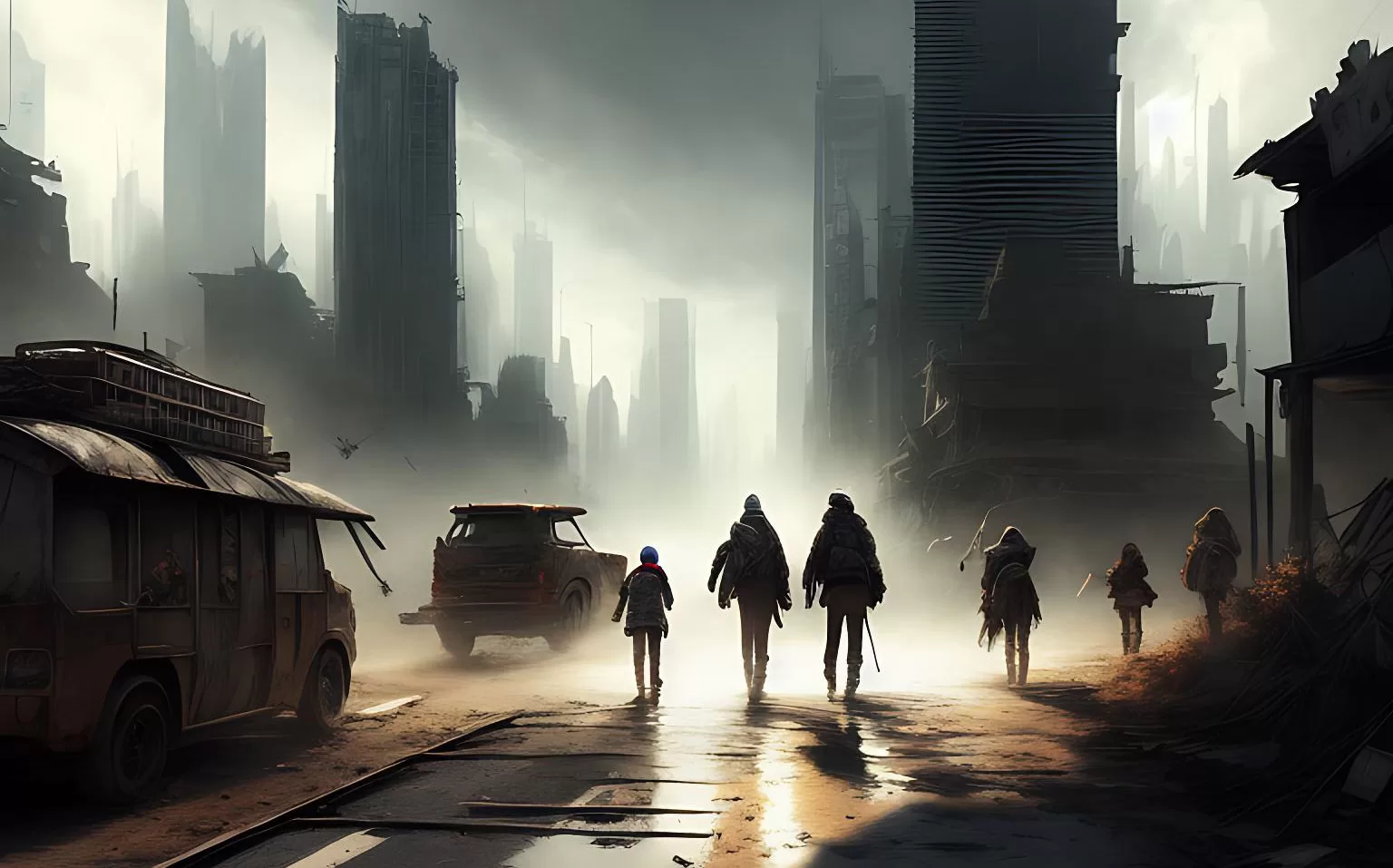


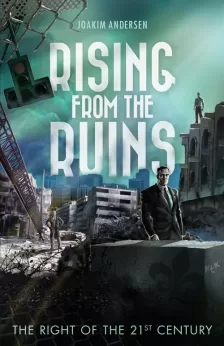
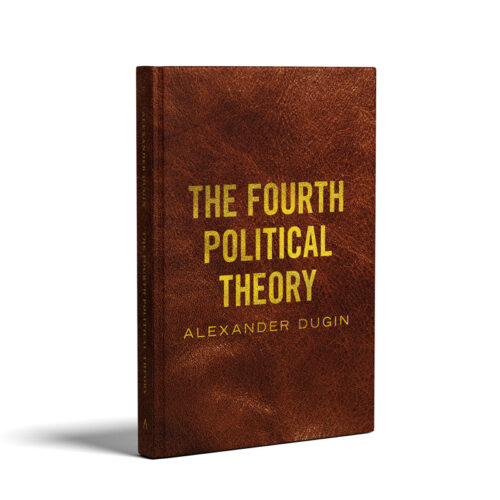
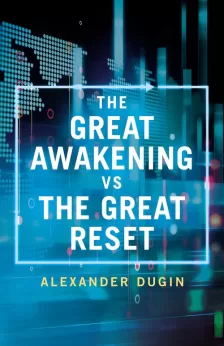

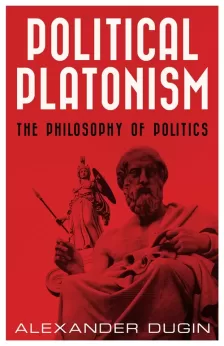



I thought I was the only nationalist to be influenced by FOUNDATION! Joachim quoting it really hit the mark for me. Even better in that the article is covering pagan myths and then incorporating science fiction!
“All empires are built with blood and fire!” – my favorite Pablo Escobar quote. Can someone recommend a good book covering Ragnarok?
This has me wanting to learn more.
Unexpected quote from a narco but makes sense when I think about it!
In Shivaite tradition this is stressed heavily. Very important wisdom.
Extremely exciting for those of us, like me, who love adventure.
This has inspired me to hunt down the book. An invigorating read!
I need to read again! I’ve had the Kindle version for years but got caught up in other things. This article was a nice reminder to return to it.
I am going to order shortly…
A strong recommend? I have a pretty full reading list right now and wondering if I should add this to it, or wait a month or two.
This is the spirit we all need more of!